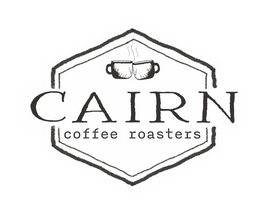Caffeine in Coffee: What You’ve Heard vs. What’s Known
Jul 25, 2025
☕ Caffeine Confidence Starts Here
We get this question a lot: “Which coffee has the most caffeine?” The answer? It depends. Roast level, brew method, and how you measure your coffee all shape what ends up in your cup.
Lately, I’ve made a small shift in my morning routine: a light breakfast—bran flakes, milk, maybe some fruit—before brewing that first cup. It helps ease digestion and slows caffeine’s effect, making for a smoother, more balanced start to the day.
It’s a reminder that caffeine intake isn’t just about the numbers—it’s intertwined with your rhythm, your brew method, and how your body responds.
Let’s break it down.
☀️ Light vs. Dark Roasts: Who Packs More Punch?
Despite popular belief, the difference in caffeine content between light and dark roasts is very small—typically just a few milligrams per cup.
The variation depends on how you measure:
-
By weight: The caffeine content is nearly identical across roast levels.
-
By volume (like scooping): Light roasts are denser, so a scoop holds more mass—and slightly more caffeine—than a scoop of dark roast, which expands and loses density during roasting.
Bottom line: If you want consistency, weigh your coffee.
❄️ Cold Brew: Smooth, Strong, and Sneaky
Cold brew is often made with a higher coffee-to-water ratio and steeped for 12–24 hours. That means:
-
A 16 oz cold brew can contain 200–300 mg of caffeine, depending on the recipe.
-
Its lower acidity and mellow taste make it easy to drink more—sometimes without realizing how much caffeine you’re getting.
Tip: If you’re caffeine-sensitive, try diluting your cold brew with water or milk.
☕ Espresso: Small but Mighty
Espresso is concentrated, but it’s served in small amounts. A single shot (1 oz) typically contains 60–75 mg of caffeine.
That’s more caffeine per ounce than drip coffee, but less overall unless you’re drinking multiple shots.
A standard 8 oz cup of drip coffee usually delivers 90–120 mg of caffeine.
So yes, espresso is strong—but not necessarily the most caffeinated.
🌙 What About Decaf?
Decaf isn’t caffeine-free—it’s 97% caffeine removed by regulation.
An 8 oz cup of decaf usually contains 2–7 mg of caffeine.
Enough to enjoy the ritual without the caffeine—but if you’re extremely sensitive, it’s worth knowing it’s not zero.
🧭 How Much Caffeine Is “Too Much”?
For most healthy adults, up to 400 mg of caffeine per day is considered safe. That’s about:
-
3–4 cups of brewed coffee
-
2 cold brews
-
5–6 espresso shots
But everyone’s tolerance is different. If you’re feeling jittery, anxious, or having trouble sleeping, it might be time to scale back.
🍽️ Why I Eat Before I Brew
Eating before coffee slows caffeine absorption and supports digestion.
Food in your stomach delays how quickly caffeine hits your bloodstream, leading to a smoother, more sustained effect. It also helps reduce acid discomfort and supports nutrient absorption—especially iron and calcium.
Final Thoughts
Caffeine content varies—but with a little knowledge (and a scale), you can dial in your brew to match your taste and your tolerance.
Whether you’re seeking focus or brewing with intention, we’re here to help you brew better.
—Cairn Coffee Roasters 🧭
